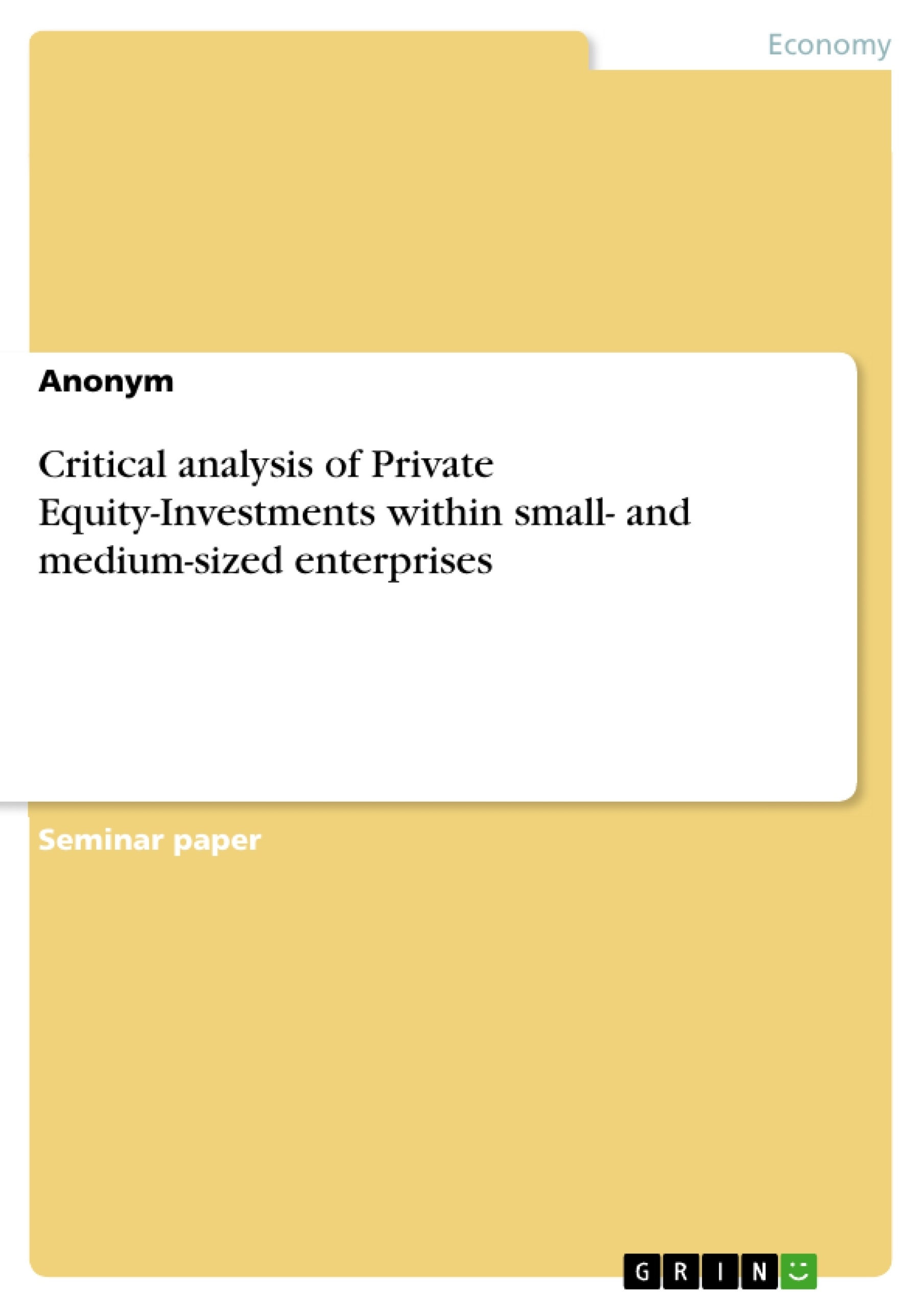This term paper is split into five chapters. After the introduction, the theoretical framework of small- and medium-sized enterprises (SMEs) and private equity (PE) is elaborated. Besides the explanatory definition of PE, an overview of PE types and the roles in PE investments is provided. Chapter three emphasizes the process of PE investments and their characteristics from the planning stage to exit strategies. Before the conclusion, opportunities and threats for SMEs and investors in PE investments are derived in section four.
Inhaltsverzeichnis (Table of Contents)
- INTRODUCTION
- 1.1 PROBLEM STATEMENT.
- 1.2 SCOPE OF WORK.
- 2 THEORETICAL PRINCIPLES
- 2.1 SMALL- AND MEDIUM-SIZED ENTERPRISES (SME).
- 2.2 PRIVATE EQUITY .
- 2.2.1 Types of PE
- 2.2.2 Roles in private equity investments.
- 3 PRIVATE EQUITY INVESTMENTS IN SMES
- 3.1 SELECTING.......
- 3.2 STRUCTURING...
- 3.3 MONITORING.
- 3.4 EXITING
- 3.4.1 IPO...
- 3.4.2 Trade Sale..
- 3.4.3 Buy Back
- 3.4.4 Secondary Sale
- 4 CRITICAL ANALYSIS
- 4.1 OPPORTUNITIES AND RISKS FOR SMES..
- 4.2 OPPORTUNITIES AND RISKS FOR PE FIRMS
- 5 CONCLUSION.
Zielsetzung und Themenschwerpunkte (Objectives and Key Themes)
This paper aims to analyze the opportunities and risks associated with private equity (PE) investments in small- and medium-sized enterprises (SMEs) for both parties – the investor and the SME. The paper focuses on the characteristics of PE investments, examining the selection, structuring, monitoring, and exiting processes.
- Importance of SMEs in the German economy
- Overview of private equity investments and their characteristics
- Analysis of opportunities and risks for SMEs from PE investments
- Analysis of opportunities and risks for PE firms from SME investments
- The significance of PE investments in facilitating SME growth and innovation
Zusammenfassung der Kapitel (Chapter Summaries)
The first chapter introduces the problem statement, highlighting the importance of SMEs in the German economy and the rising trend of PE investments. The scope of the paper is defined, outlining its structure and key areas of focus. Chapter two provides a theoretical framework by defining SMEs and PE. It explores different types of PE and the roles involved in PE investments. Chapter three delves into the PE investment process, examining its characteristics from planning to exit strategies. It discusses different exit strategies, including IPO, trade sale, buyback, and secondary sale.
Schlüsselwörter (Keywords)
The key terms and focus topics explored in this paper include private equity, small- and medium-sized enterprises (SMEs), investment opportunities, investment risks, exit strategies, IPO, trade sale, buyback, secondary sale, and the German economy.
- Citation du texte
- Anonym (Auteur), 2021, Critical analysis of Private Equity-Investments within small- and medium-sized enterprises, Munich, GRIN Verlag, https://www.grin.com/document/1244942



